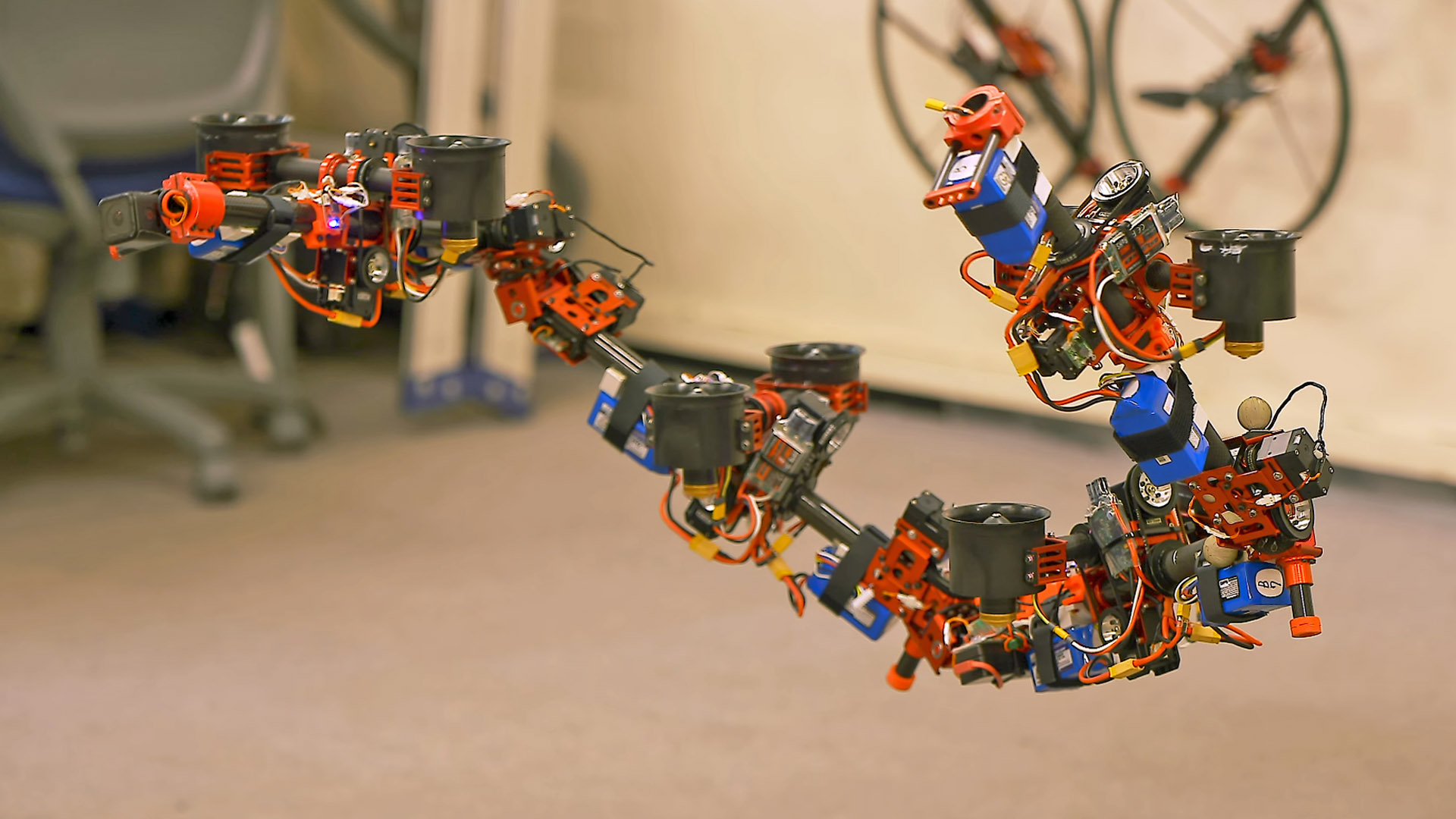

Quadrotor drones are slowly but surely taking over the world. The simple devices, powered by four electric motors, are extremely stable and capable of a variety of tasks. In the past, we’ve covered a twist on this concept which used a DaVinci-style screw propeller. Now, though, a more radical eight-rotor drone from the University of Tokyo is making the rounds on social media. It’s a completely different animal compared to a regular quadcopter. You can take that literally.
It’s called the “Dragon”, and it was developed by a team of researchers, led by Moju Zhao. It’s been in development for several years, but recent videos highlighting its capabilities have brought it back into the limelight. Effectively a self-propelled robotic arm, it’s capable of a variety of different tasks.

Its utility is only the second-most impressive thing about it, though. The way it moves through the air—like a serpentine dragon—is mind-bending. It’s capable of actively stabilizing itself through every imaginable transformation.
Using eight small ducted fans driven independently with separate motor controllers, the aircraft is capable of lifting loads up to 1 kilogram, manipulating objects like rotary valves and doors, and transforming itself into a variety of shapes to maneuver around obstacles. It’s powered by what appear to be several small lithium-polymer batteries mounted on a frame made of short carbon fiber tubes. The ducted fans and the body segments are rotated by stepper motors mated to belt/pulley systems.



The actual hardware to make this work is all commercially available at relatively low prices. The impressive part about this is how the vehicle is able to stabilize itself in a variety of configurations from a software perspective. A quadrotor, for instance, knows the location of all four sources of thrust. The force they create in the context of stabilization is therefore predictable. In the Dragon’s case, the thrust vectors can be moving constantly and shifting to locations that are not ideal for stabilization.
Despite that, the aircraft’s software can adjust the angle and thrust level of every ducted fan individually to keep the machine perfectly still in mid-air, even while handling a heavy load. Another video on Zhao’s channel with what appears to be an earlier version of the Dragon shows how this works from a software perspective.

The advantage of a drone like this is that it’s able to manipulate the world around it more effectively as compared to a conventional quadcopter. That being said, it’s still limited to the lab and until it’s tested in the field, its true utility is unknown. It is, after all, the subject of an academic paper. For now, it’s just an extremely impressive piece of engineering, one that would’ve been scarcely imaginable even 15 years ago.
Got a tip? Send us a note: tips@thedrive.com